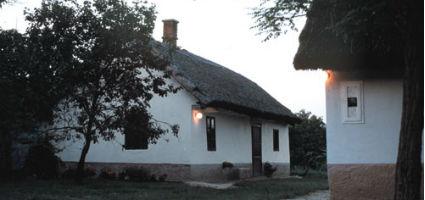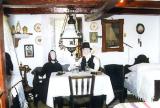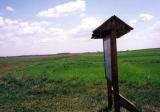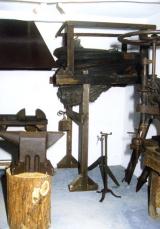2024. April 29. Monday
Blaskovich Museum - Ethnographical House - Tápiószele
 |
Address: 2766, Tápiószele Ceglédi út 5.
Phone number: (53) 380-157
E-mail: blaskovichmuzeum@femuz.hu
|
By the side of the stream Tápió there stands the thatched house which gives home to the permanent exhibition entitled "The peasant's life-style and the objective relics of the crafts in Tápiószele in the first half of the 20th century. The 100-year-old peasant house was purchased by the local council in 1994. It was renovated in 2000. The exhibition was arranged by the Friendly Society of the Blaskovich Museum, under the professional direction of the Tápiószele Museum.
The ethnography exhibition has been open since 20th August 2000. In the three rooms of the main building a kitchen, furnishig of teh lard, utility tools and feastal objects are found. In the corner of the room there stands a stove,in the kitchen there is an oven. The enteriour of the room reflects the life circumstances and customs of the Catholic cotters. We can get to know the textiles and clothing of the every day peasant's life. Basic tools and facilities of agriculture are seen in the kitchen.
In the otbuilding tools of various handcrafts (shoemaking, hatmaking, string making etc.) are seen, and the whole equipment of the smithery of local smith József Szántha.
The fauna and flora of the region are demonstrated by a study path leading out from the ethnography house.
By visiting the ethnography house and the study path, visitors can get to know about the architectural and natural values of the settlement.
The ethnography exhibition has been open since 20th August 2000. In the three rooms of the main building a kitchen, furnishig of teh lard, utility tools and feastal objects are found. In the corner of the room there stands a stove,in the kitchen there is an oven. The enteriour of the room reflects the life circumstances and customs of the Catholic cotters. We can get to know the textiles and clothing of the every day peasant's life. Basic tools and facilities of agriculture are seen in the kitchen.
In the otbuilding tools of various handcrafts (shoemaking, hatmaking, string making etc.) are seen, and the whole equipment of the smithery of local smith József Szántha.
The fauna and flora of the region are demonstrated by a study path leading out from the ethnography house.
By visiting the ethnography house and the study path, visitors can get to know about the architectural and natural values of the settlement.


